As a team of marketers, we wanted to dive into an intriguing topic that often gets overlooked: the difference between communication and influence. You see, communication is all about moving information, but influence takes things a step further by turning ideas into action.
What is Influence?
Influence is the ability to help others understand why you care about a certain goal and have them support you on your journey. Influence is not a goal; it’s an output.
Influence is an essential element of leadership. Leaders influence others to achieve a common task.
Studies defining approaches to influence in the workplace have outlined nine tactics. Three are known as ‘hard’ and nine are regarded as ‘soft’ tactics. (see Figure 1).
Knowing which influence approach to use and when can help Marketing Managers adopt a communication strategy relevant to the situation and audience.
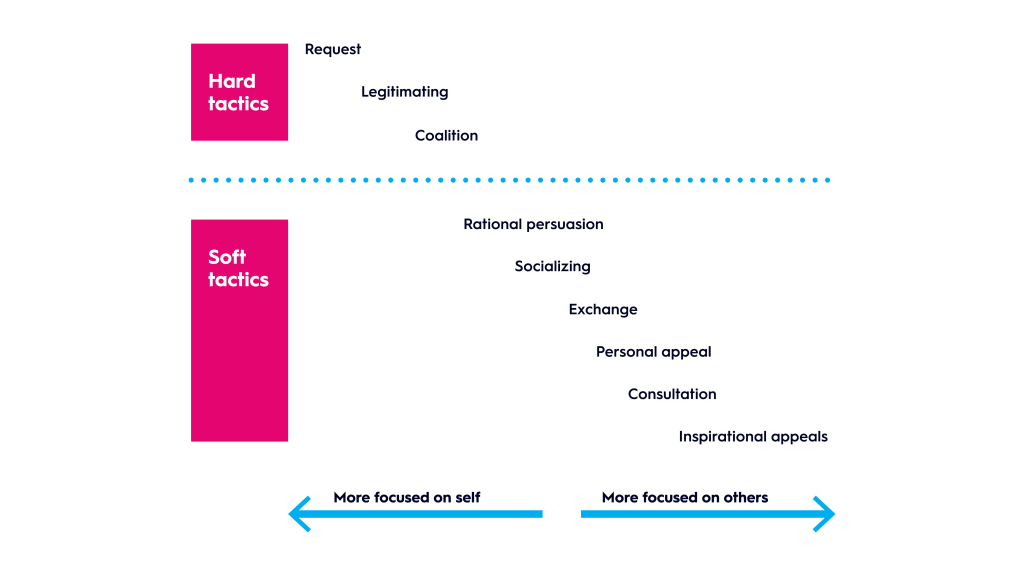
The hard tactics are delivered from the Manager’s perspective and are usually simple and straightforward. The soft tactics are more complex and require Marketing Managers to understand the perspectives, characteristics and motivations of who they’re trying to influence. The success of each influence tactic can be determined by three different outcomes: commitment, compliance or resistance to an idea.
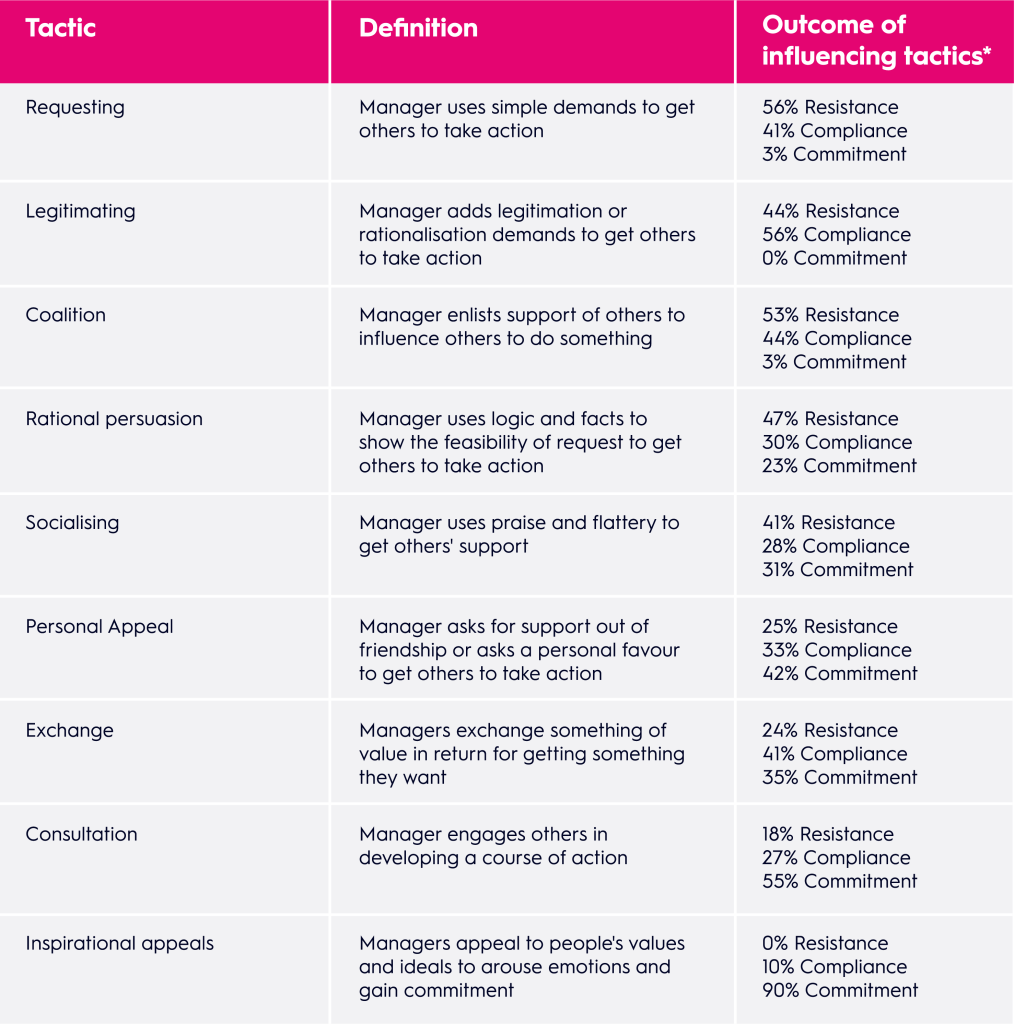
Rational persuasion is the most frequently used approach, followed by requesting and personal appeals. But which method is the most effective? Studies have shown that each approach has its place depending on the situation.
The hard tactics — requesting, legitimating and coalition — create a high level of compliance and suit easy and routine requests or when a situation is urgent and requires swift action. Requesting may also work best when the situation depends on the Marketing Manager’s relevant knowledge.
Soft tactics are usually more effective in difficult or involved situations, such as when decisions must be taken across an organisation or involve multiple stakeholders. Soft tactics are more suitable if the situation is complex, requires extra effort and persistence, or is ambiguous and people are nervous about the outcome. Inspirational appeal is the most powerful form of influence. It requires an understanding of the people you need to influence and the ability to empathise and put yourself in someone else’s shoes.
Influencing the C-Suite
Knowing which influential style works with each audience is a foundational approach to communication. In addition, understanding the demands placed on different stakeholders a Marketing Manager engages with, such as the Executive and sales, is also important.
When meeting with your Executive, understand they work with inadequate resources and under tight deadlines; respect this by:
- Knowing your audience — Who are they? How do they like to receive their information?
- Emphasising the why — Focus on the why of your ideas more than the how. Just because the audience is internal doesn’t mean they won’t have pain points you can help address.
- Be valuable — Be quick to demonstrate the value of your ideas.
- Be direct — Come prepared to describe a real problem and your solution directly.
- Be concise, clear and honest — Identify a few critical factors behind your marketing ideas
- Actively listen and be prepared for questions — Anticipate the questions you may be asked.
- Master the 30-second answer — Prepare quick, succinct answers to anticipated questions.
- Deliver bad news immediately — Also, be willing to say, “I don’t know, but I will find out” if you don’t know the answer to something.
- Prepare, then adapt — Be prepared and willing to leave your hard work to the side if the meeting changes course.
- Keep presentations brief — Offer leave behinds if more information is needed
- Be mindful of time — Gauge the interest of your audience, if halfway through the meeting you have lost their attention, ask, “Is this discussion on target for you?” and don’t go over time.
Getting sales buy-in
Sales buy-in vs compliance
Sales buy-in is the belief by sales staff that a proposed marketing idea or marketing strategy is appropriate and has merit. Buy-in differs from compliance, where salespeople may perform a marketing activity because they have to, not because they’re convinced of the initiative’s merit or appropriateness.
Getting sales buy-in can be complex and multifaceted. Research has shown that organisational and contextual conditions influence sales buy-in.
Issues affecting how sales and marketing work together:
- Interfunctional conflicts — Ensure you have clearly defined roles
- Different goals — Understanding and aligning goals is essential
- Perception marketers are disconnected from market conditions — Open communication about market research results and consultation with sales staff for insights help overcome this issue.
- Differences in work culture — Regular interaction between Marketing & Sales helps break down cultural differences.
Tools for Marketing Managers to improve communication between sales and marketing include:
- Be objective and facts-based in marketing communications
- Share necessary background data behind creating marketing strategies
- Present unbiased, rational assessment of market situations
- Do not try and ‘sell’ your marketing ideas
- Understand your different worldview – don’t underestimate the value of field experience
- Involve sales involvement in the strategy creation process
- Make the sales process easier, support the field team
- Eliminate silos and encourage the free flow of information
- Build close relationships between sales and marketing personnel
- Ensure each level of the sales hierarchy has bought into your marketing strategy
- Give salespeople adequate time to absorb marketing strategies
Getting your message across
Understanding influence tactics and the challenges faced by your key stakeholders can help you become a more influential communicator. Knowing your communication style and what you personally can manage to help get your message across is also helpful.
6 areas you can manage to get your message across:
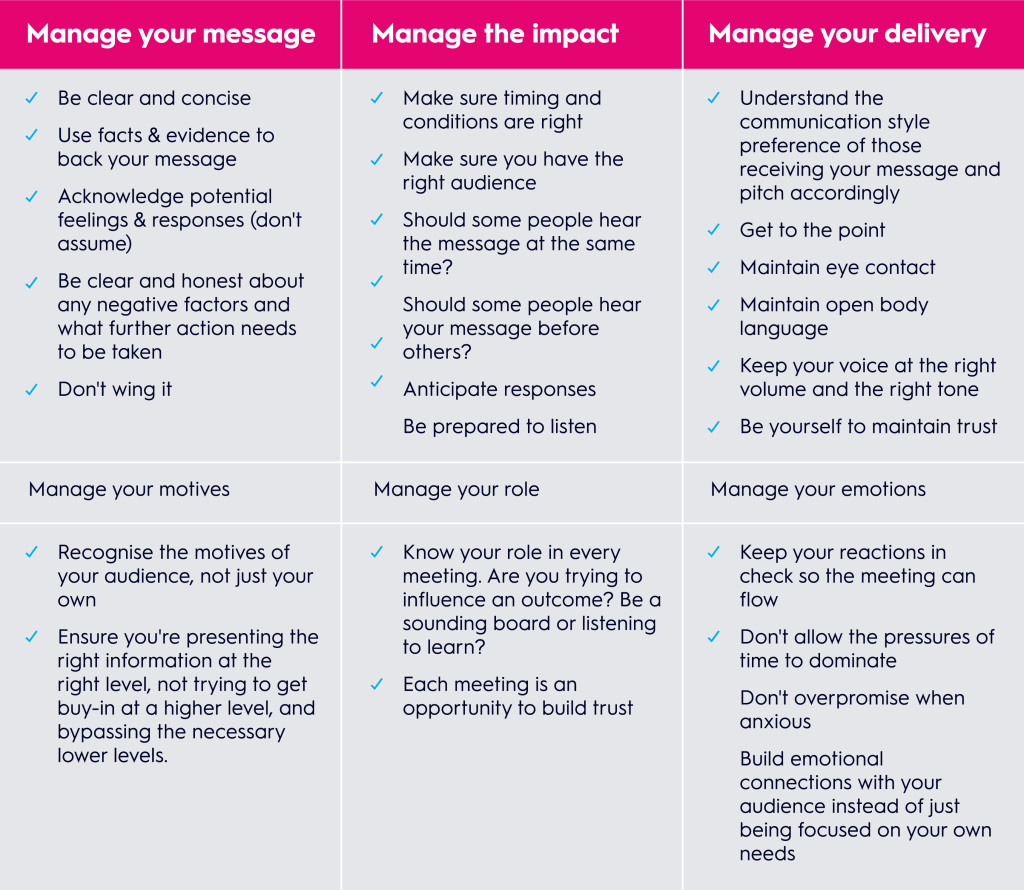
Understanding your communication style
Understanding your communication style (and the communication style of those around you) can help you become a better communicator and tailor your style to different situations.
A communication style test can help you better understand your delivery style.
Communication Style test – Instructions
Reading one row at a time, give each word a value from 1-4 with 4 representing the word most like you and 1 representing the word least like you.
You must have one of each number only in every row so each row adds to 10. Now add your scores for each colour and mark them against the boxes below.
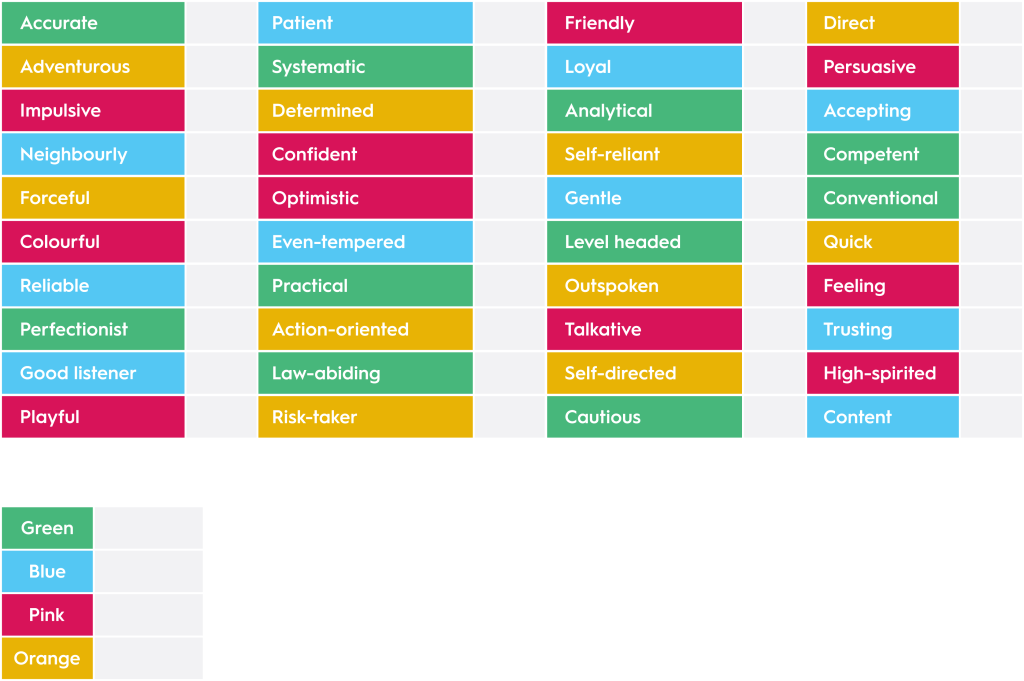
Once you’ve determined which dominant colour you chose, see the chart below to see your communication style and characteristics.
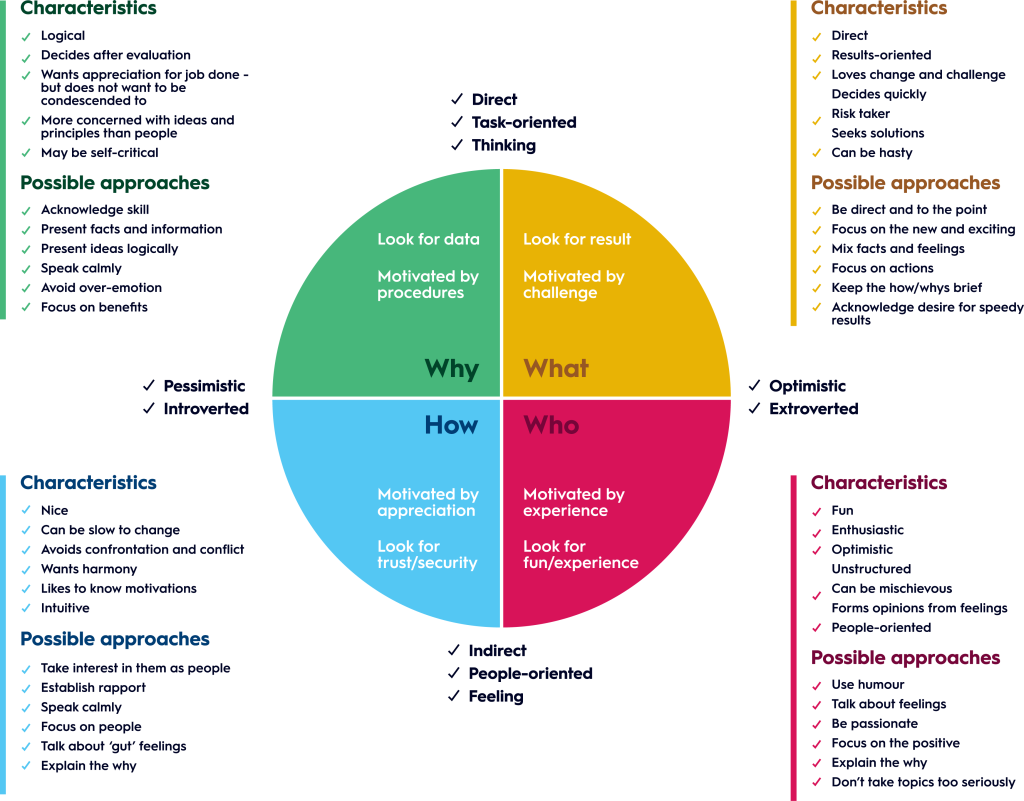
Choosing the right influence tactic for your audience and situation, understanding your key audiences’ challenges, and your communication style will help you become an influential Marketing Manager and achieve the outcomes you need to drive business growth.
Viabrand®is an experienced Brisbane marketing team and branding agency that can help develop and execute agile marketing plans. Book a complimentary, no-obligation 30-minute call to learn more: https://calendly.com/viabrand/30min
